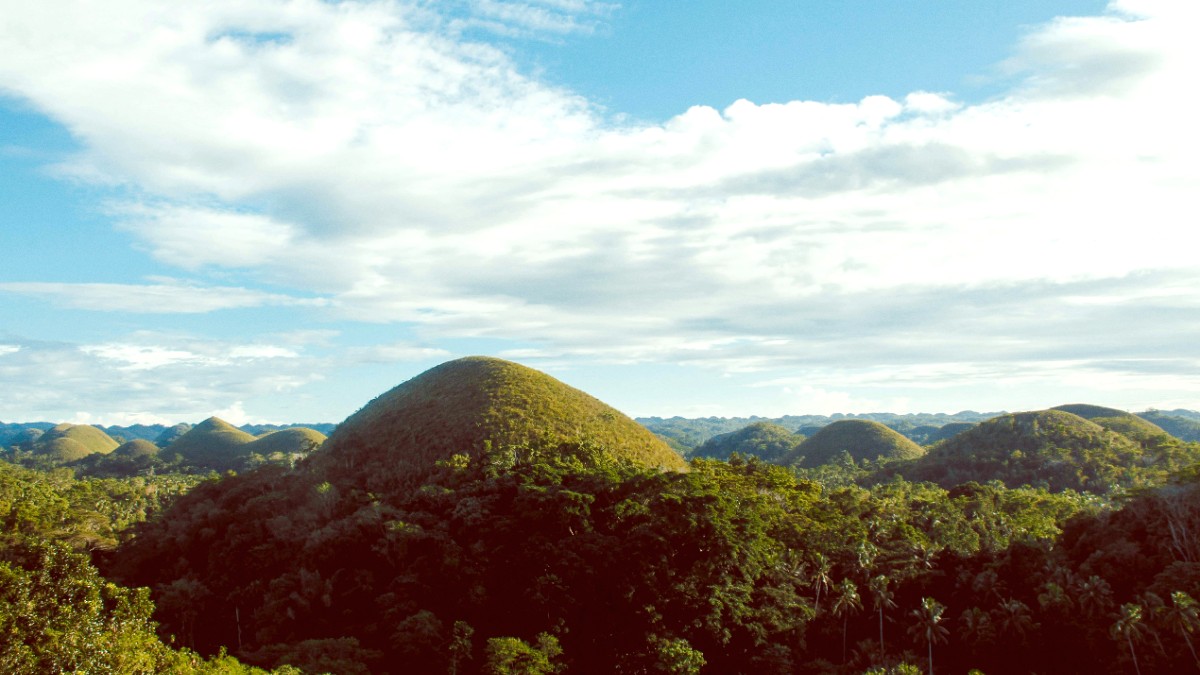
The Visayas, Philippines
Imagine emerald hills that transform to chocolate brown under the sun, tiny primates with large, inquisitive eyes, and rivers winding through lush forests. Picture calm, clear waters lapping against soft, white sand.
From the moment you arrive, you experience a blend of warmth from the local people and the quiet allure of the island's many sights. Bohol presents a chance to connect with nature, learn about history, and relax in a tropical setting.
It remains a place where every turn presents a new discovery, from its distinct geological features to its thriving marine life and welcoming communities. Visiting Bohol lets you experience a different side of island life, filled with gentle adventures and memorable moments.
Bohol is an island province in the Central Visayas region of the Philippines, southeast of Cebu and southwest of Leyte. It positions itself as a central and accessible point within the Visayan island group, ranking as the tenth largest island in the Philippines by land area.
The main island comprises a central mountainous area, specifically the Sierra Bullones, and a rolling plateau characterized by limestone hills like the Chocolate Hills. Coastal areas offer white sand beaches, notably on Panglao Island, linked to Tagbilaran City by bridges.
Approximately 4,821 sq km, in the Central Visayas.
Home to 75 smaller islands, including Panglao Island.
Features mountains, rolling plateaus, and coastal beaches.
Iconic geological formations changing color seasonally.
Tagbilaran City, the main entry and transport hub.
Bohol’s history runs deep, marked by events that shaped not only the island but also the early narrative of the Philippines. One of the most remembered moments is the "Sandugo," or blood compact, which took place in 1565.
Spanish missionaries built many stone churches across the island, which are architectural and historical treasures today. Baclayon Church, for example, ranks among the oldest stone churches in the Philippines, with construction beginning in the late 17th century.
In recent history, Bohol lingered a major earthquake in 2013, which caused considerable damage to infrastructure and historical sites. The community's swift recovery efforts showcased their strong resolve and spirit.
The province also claims a history of resistance against foreign rule, notably the Dagohoy Rebellion, considered the longest rebellion in Philippine history.
Bohol presents a complete travel experience, combining natural wonders, historical depth, and relaxing beach getaways. The island’s fame rests on the Chocolate Hills, an unique geological formation that shifts in color depending on the season.
The Philippine tarsier, one of the world's smallest primates, captures hearts with its tiny size and large eyes, observable in dedicated sanctuaries. Beyond these iconic sights, the Loboc River provides tranquil cruises through lush scenery.
A geological marvel featuring over a thousand cone-shaped hills that change from green to chocolate brown.
Encounter one of the world's smallest primates with its distinct large eyes in its natural habitat.
Enjoy tranquil cruises through lush scenery, often featuring local music and dining.
For those seeking coastal relaxation, Panglao Island presents white-sand beaches like Alona Beach, known for its lively atmosphere, diverse dining, and diving opportunities.
A 1565 agreement between Spanish explorer Miguel López de Legazpi and Datu Sikatuna, symbolizing friendship.
A prolonged uprising against Spanish rule led by Francisco Dagohoy in the 18th century.
A natural event causing damage, yet demonstrating the Boholano people's resilience and recovery efforts.
Commemorates the 1565 treaty between Miguel López de Legazpi and Datu Sikatuna, symbolizing early international friendship.
Stone churches across the island showcase Spanish colonial architectural and historical significance.
The Dagohoy Rebellion highlights the Boholano people's strong desire for independence and homeland defense.